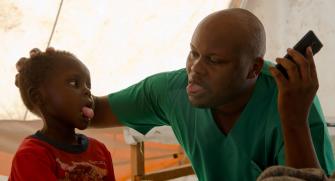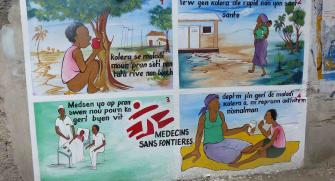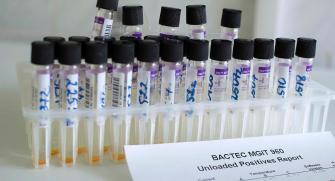Evaluation of a localized response to cholera outbreaks
What is the risk of cholera today?
Flavio Finger: Cholera outbreaks regularly occur in areas where sanitation and drinking water systems are failing. In Africa and the Middle East, 126 million people live in areas frequently exposed to cholera outbreaks. The impact of cholera is difficult to estimate, as the majority of cases go unreported, and the estimated number of deaths ranges from 21,000 to 143,000 each year (1).
From 2017 to 2018, major outbreaks with 16,000 to 1.3 million reported cases notably occurred during humanitarian crises in Yemen, DRC, Somalia, northern Nigeria and South Sudan.Today, we are facing outbreaks of this highly contagious diarrheal disease caused by the ingestion of contaminated water in Goma and Kaniro in North Kivu province in DRC.
What is the response to such a situation?
FF: With the support of Médecins Sans Frontières (MSF), the DRC's Ministry of Health is trying to curb these epidemics by taking care of the sick, multiplying awareness campaigns, distributing products to treat water, and acting on drinking water supply and sanitation systems.
At the same time, we will evaluate the so-called CATI (Case-Area Targeted Intervention) strategy to contain and limit the duration of the epidemic. Its principle is based on targeted action in the high-risk radius around clusters, which usually consist of one or more households, to prevent the spread. Epidemic foci are fueled by a rapid cycle of transmission within family households and in close neighbourhoods, due to a short incubation period of a few hours to 5 days, bacterial shedding lasting from a few days to 2 weeks, and the resulting contamination of water and food.
Based on past analyses, the spatio-temporal high-risk zone corresponds to a circle of 100-250 meters around foci where cases have been identified during a 7-day period. Interventions may consist of antibiotic chemoprophylaxis, hygiene promotion interventions and distribution of hygiene kits as well as a dose of oral vaccination, which is the specificity of "our" CATI. It should be noted that in DRC, the second dose of vaccine will be administered at a later stage to increase the duration of protection. Depending on the local context and operational considerations, these interventions can be all combined, or limited to some, and implemented in parallel or successively.
The preventive effectiveness of these actions on the individual is known. However, their potential to contain an epidemic in its entirety remains poorly understood and depends on their combination, their sequencing and the timing of their implementation. Depending on the context, MSF medical teams decide which CATI-type interventions to implement and their range of action.
Our study aims to assess the impact of different CATI interventions on the spread of an epidemic, knowing that these can combine immediate effects with longer-term protection via vaccination. Our objective is to better define the response to be implemented in case of a cholera outbreak. However, it should be remembered that the deployment of a CATI-type response depends on the existence of effective surveillance.
What other ways are there to fight cholera?
FF. : The fight against cholera requires, first and foremost, access to drinking water and sanitation solutions. Another determining factor is vaccination. There are oral vaccines prequalified by the WHO that we can use in the framework of the CATI project, which was not the case in the previously developed CATIs. Mass vaccination campaigns among populations considered at risk of epidemics can also be considered as a means of prevention. Another study conducted by Epicentre in the DRC aims to better quantify the impact of these campaigns and the potential for the spread of the disease following them.
Along with these two points, the roadmap of the global cholera task force includes early detection and rapid response to contain cholera outbreaks. The CATI study that we have just launched in DRC and that should soon be extended to Cameroon and other countries if outbreaks occur is fully in line with this objective. For many years, Epicentre has participated in MSF programs to improve the management of cholera patients and to deploy new response and prevention strategies for this disease that affects the most vulnerable populations worldwide.
(1) Source WHO https://www.who.int/fr/news-room/fact-sheets/detail/cholera









